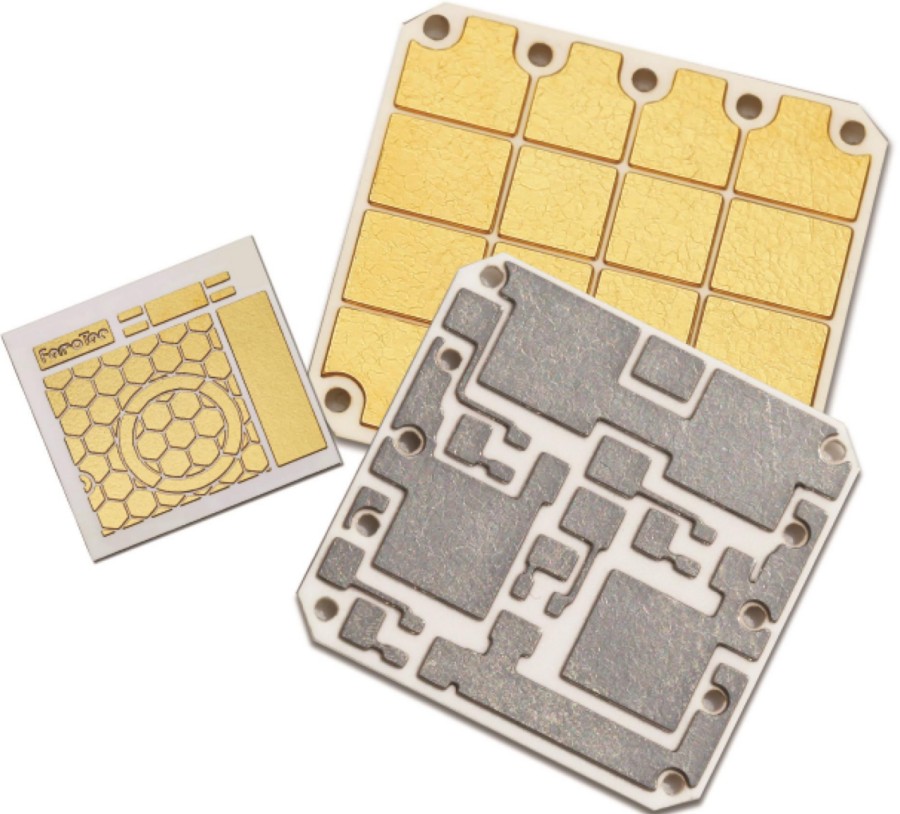IGBT Ceramic PCB
What's IGBT Ceramic PCB?
IGBT Ceramic PCB, or Insulated Gate Bipolar Transistor, is a BJT transistor with a MOS Gate, or we can say an IGBT module is the combination of a BJT and a MOS Gate. An IGBT chip is small in size, but it can control electrical energy transmission and achieve 100,000 times of current switch at ultra-high voltages of 650 million V in only 1 second.

IGBT Ceramic PCB Technology
Ceramic PCBs are better than ordinary PCBs due to their heat dissipation performance, current-carrying capacity, insulativity, coefficient of thermal expansion, etc. so they are widely used in various fields. So what are the application areas of ceramic PCBs?
High-power power electronic module
High-power semiconductor modules are a combination of certain functions and modes. Whether it is an insulated gate bipolar transistor (IGBT) or a DC high-power module, ceramic PCB is one of the main core components and has a very large heat dissipation requirement. No matter how heat is generated, the first contact point of the heat is the substrate, so aluminum nitride ceramic PCB is undoubtedly the best choice.
Ceramic PCBs dissipate thermal from IGBT chip to the outer packaging
You may ask, how much thermal does an IGBT module generate when it works? It is equal to the heat generated by 100 electric furnaces. So much thermal has to be dissipated immediately from the IGBT chip and leads to the application of ceramic PCBs.
How does a ceramic PCB protect the IGBT module from the heat? In an IGBT module, a ceramic PCB is placed under the IGBT chip, or we can say that the chip is assembled on the ceramic circuit board. The ceramic PCB connects and supports the chip and dissipates thermal quickly from it to the outer packaging. In this way, the chip is protected from the influence of thermal.
Why Ceramic PCBs can be used for IGBT thermal dissipation
There are alumina (Al₂O₃) PCBs, aluminum nitride (AlN) PCBs, and silicon nitride (Si₃N₄) PCBs used for thermal dissipation of IGBT modules.
Why ceramic PCBs can dissipate thermal effectively for the IGBT module? Because ceramic materials have good properties of thermal dissipation and electrical insulation. Unlike aluminum substrate PCBs, ceramic PCBs do not use an insulation layer that hinders thermal dissipation. During the ceramic PCB manufacturing process, the copper-clad is directly bonded onto the ceramic substrate at high temperatures under high pressures. Then the circuit layer is manufactured by the photoresist coating method. When the circuit board is manufactured, the IGBT and other components are mounted on the board. Ceramic materials have ultra-high insulation and can withstand breakdown voltage up to 20KV/mm. The thermal conductivity of alumina PCBs is 15-35W/mK, aluminum nitride PCB 170-230W/mK, and silicon nitride PCB 80+W/mK. On the contrary, an aluminum PCB has thermal dissipation of only 1-12W/mK.

 Chinese
Chinese English
English Russian
Russian Spanish
Spanish Portuguese
Portuguese





